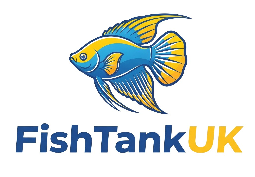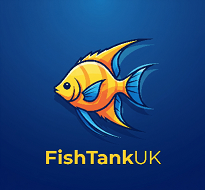
Wednesday 30th October 2025
The Guide to Feeding Your Aquarium
Ah, feeding time. It’s perhaps the most interactive and enjoyable part of keeping an aquarium. We stand by the glass, tub of flakes in hand, and watch as our fish dash to the surface, a riot of colour and motion. It’s a simple joy, and it makes us feel like good pet owners.
But what if I told you that this daily ritual is the single easiest thing to get wrong, and the source of most problems in the hobby?
We’ve all been there. The fish look so hungry. Your child, or partner (or let’s be honest, you) plonks in an extra-large pinch “just as a treat.” This well-intentioned “kindness” is, unfortunately, the number one way we sabotage our own tanks.
Getting feeding right is the cornerstone of a healthy, stable, and beautiful aquarium. Getting it wrong is a recipe for disaster. So, let’s put the kettle on, grab a biscuit, and have a proper chat about what, when, and how to feed your fish.
😨 The Big Problem: When “Just a Little More” Goes Horribly Wrong
Overfeeding is a far greater danger to your fish than underfeeding. A healthy fish can go for a week or more without food (many fishkeepers will fast their fish before a holiday), but they cannot survive for long in the toxic soup that overfeeding creates.
Here’s a breakdown of the problems that arise from a heavy hand at feeding time.
- 1. Water Quality Collapse (The Invisible Killer) This is the most critical issue. Your aquarium is a delicate, closed ecosystem. Unlike in a river or lake, waste has nowhere to go.
- Ammonia Spikes: Uneaten food doesn’t just vanish; it rots. As it decomposes, it releases toxic ammonia.
- More Waste: A fish that eats too much also produces far more waste (poo). This waste also breaks down into ammonia.
- The Result: Your filter’s good bacteria, which are responsible for breaking down this ammonia, become overwhelmed. Ammonia and nitrite levels skyrocket, chemically burning your fish’s gills, causing stress, and leading to death. It’s a fast track to a tank crisis.
- 2. A Manky, Unhealthy Tank (The Visible Mess) A well-fed tank is a clean tank. An overfed tank is a swamp.
- Algae Blooms: Algae, from the green stuff on your glass to that horrid hair algae, feeds on the same things as your filter bacteria: nitrates and phosphates. Excess food and waste are a buffet for algae, leading to an endless, losing battle for you.
- Cloudy Water: That milky, cloudy water you can’t get rid of? It’s often a bacterial bloom, a huge explosion of bacteria feasting on the excess nutrients in the water column.
- Fungus & Pests: That white, cotton-wool-like fungus growing on the gravel? It’s eating the leftover flakes. This can also lead to an explosion in the pest snail population.
- 3. Serious Health Problems for Your Fish It’s not just the water; you are directly harming the fish themselves.
- Obesity & Fatty Liver Disease: Yes, fish get fat. Just like us, a diet too high in calories leads to obesity. This puts a massive strain on their internal organs, particularly the liver (hepatic lipidosis), which can lead to premature death.
- Constipation & Swim Bladder Issues: This is especially common in fish like goldfish and bettas. Dry foods (flakes and pellets) swell with water. If a fish gorges itself, this food expands in its gut, leading to blockages, constipation, and a loss of buoyancy (the classic “stuck at the top” or “sinking to the bottom” behaviour).
🍽️ What’s on the Menu? A Fish Food Buffet
“Fish food” is not just one thing. A varied diet is crucial for health, colour, and vitality. Feeding your fish the same beige flakes every day for years is like you eating nothing but toast.
Here’s a look at the main food groups available.
1. The Staple: Flakes & Pellets
This is the “daily bread” for most aquariums. A high-quality flake or pellet should be the core of their diet.
- Look for: Foods with fish meal, shrimp, or insect meal as the first ingredient, not “wheatflour” or generic “fish derivatives.”
- Pro-Tip: Pellets come in many forms—floating, slow-sinking, and sinking—to suit different fish (e.g., Corydoras need sinking wafers, whilst Tetras prefer to feed mid-water).
2. The Gourmet Treat: Frozen Foods
This is where you can really enrich your fish’s diet. These are free of parasites (thanks to the freezing process) and packed with nutrients.
- Common types: Bloodworm (a rich treat), Daphnia (high in fibre, great for digestion), Brine Shrimp, Mysis Shrimp.
- How to feed: Never drop the frozen cube straight in. Thaw it in a small pot with a bit of tank water, then pour the contents in. This stops fish from getting “ice-cream headaches” and stops the food being wasted.
3. The Thrill of the Hunt: Live Foods
Live food is the most natural option and fantastic for encouraging natural hunting behaviour.
- Common types: Daphnia (water fleas), brine shrimp (easy to hatch at home).
- The Caution: Always buy from a reputable aquatic shop. Collecting food from your local pond is a brilliant way to introduce parasites and disease into your tank.
4. The Green Grocer: Vegetables
If you have herbivores or omnivores, they need their greens!
- Who for? Plecos, Ancistrus (Bristlenose), Otocinclus, Goldfish, and even fish like Mollies will love them.
- What to feed: Blanched courgette (zucchini), cucumber slices, deshelled peas (a fantastic natural laxative), and specialist algae wafers.
- How to feed: Weigh veg down with a “pleco-fork” or similar. Crucially, remove any uneaten veg after a few hours (or overnight) to stop it from fouling the water.
⏰ Finding the Right Rhythm: Feeding Schedules
So, how much and how often? The answer depends on your fish.
The Golden Rule: The Two-Minute Rule
No matter what schedule you choose, the golden rule is: Only feed what your fish can completely consume in 1-2 minutes. If there is still food floating around after two minutes, you have fed too much. Gently remove any excess with a net or syphon.
Common Feeding Schedules
- The Community Tank Standard (Twice a Day)
- Who: Most community fish (Tetras, Guppies, Rasboras, Barbs).
- How: A tiny pinch in the morning and a tiny pinch in the evening. “A tiny pinch” is often the amount you can hold between your thumb and forefinger.
- This is better for a fish’s digestive system than one large meal.
- The “Once a Day” Method
- Who: Good for larger, less active fish (like some Cichlids) or in very well-established, mature tanks.
- How: One controlled, 2-minute feed per day. This is a perfectly acceptable schedule for most adult fish.
- The “Grazing” Schedule
- Who: True herbivores like Plecos, which are designed to browse and rasp food over long periods.
- How: Feed their main meal (an algae wafer or vegetable) in the evening when they become active.
- The Fry Schedule (Multiple Feeds)
- Who: Baby fish (fry).
- How: Fry have tiny stomachs and fast metabolisms. They need 3-5 very small feeds per day of specialised, high-protein fry food.
Don’t Forget the Fast Day!
This is my single biggest tip for any fishkeeper. Give your fish one “fast day” per week. This means absolutely no food for 24 hours.
This is not cruel. It’s incredibly beneficial. It gives their digestive systems a chance to clear out, reduces the overall waste in the tank, and mimics the natural “lean” periods they would experience in the wild. A weekly fast makes for a healthier fish and a cleaner tank.
Your New Mantra: Less Is More
Feeding our fish connects us to them, but it’s a responsibility. By switching our mindset from “generous provider” to “sensible nutritionist,” we do them a far greater service.
A correctly fed fish is active, colourful, and healthy. A correctly fed tank is clean, stable, and a joy to look at. So, put that tub of flakes down, take a step back, and admire your handiwork—your fish will thank you for it.


 Previous Post
Previous Post